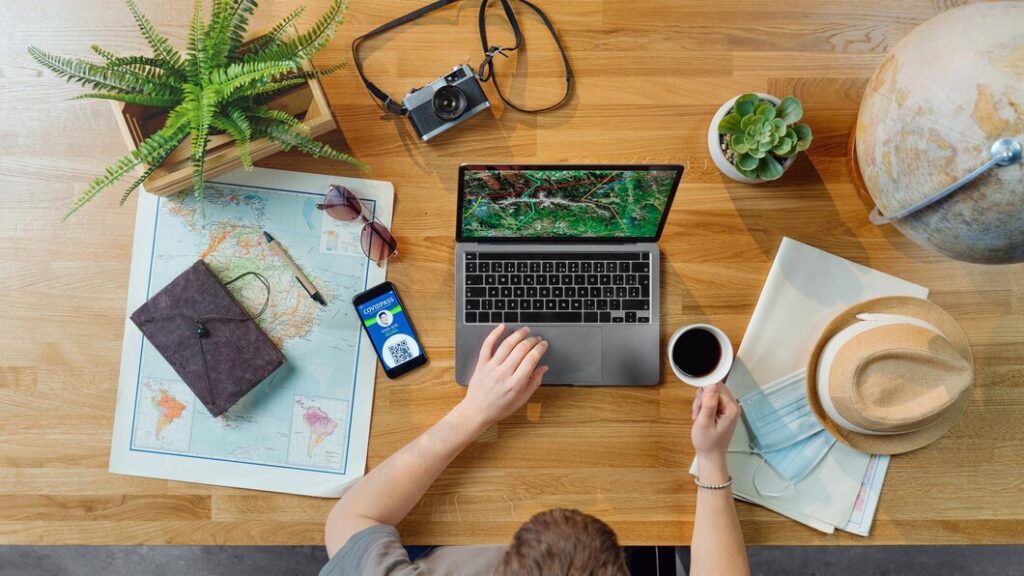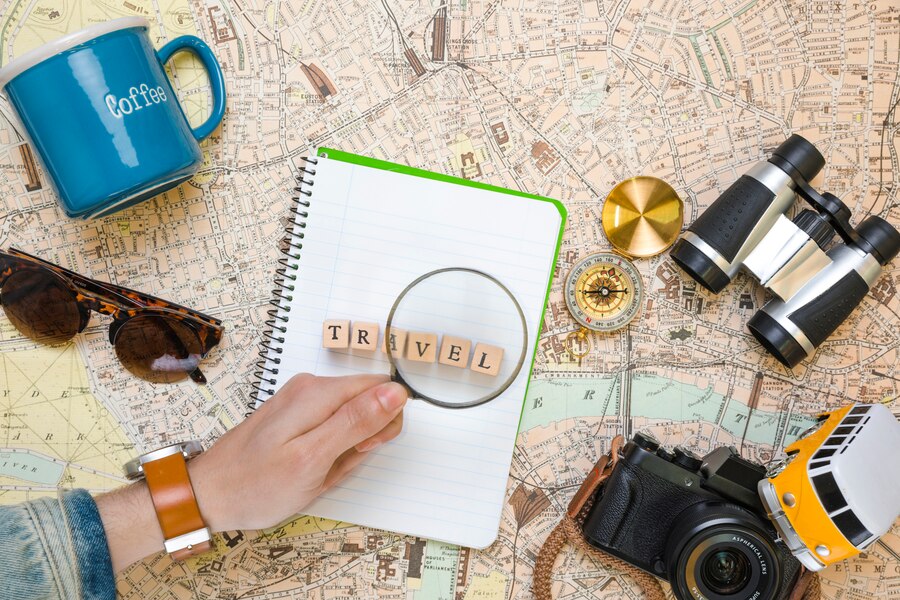Ever thought about starting a travel blog but didn’t know where to begin? You’re in the right place! Travel blogs are not just a way to document your adventures; they can inspire others, share valuable tips, and even become a source of income. This guide will walk you through every step of starting your own travel blog, from choosing a niche to promoting your content. Let’s dive in!
Why Niching Down Matters
Picking a niche is crucial. It helps you stand out in the crowded world of travel blogs. Instead of being a jack-of-all-trades, you become a master of one. This can attract a dedicated audience who are interested in what you specifically offer.
Popular Travel Blog Niches
Some popular niches include solo travel, luxury travel, budget travel, adventure travel, and family travel. Choose one that resonates with your interests and expertise.
Finding Your Unique Angle
Your unique angle is what sets you apart. It could be your personal story, a unique travel style, or a specific audience you cater to. Think about what makes your travel experiences different and how you can offer something fresh.
Selecting a Platform
WordPress is a favorite among bloggers due to its flexibility and robust features. Other options include Wix, Squarespace, and Blogger. Choose one that fits your technical skills and needs.
Domain Name and Hosting
Pick a catchy, easy-to-remember domain name that reflects your niche. For hosting, reliable options include Bluehost, SiteGround, and HostGator.
Designing Your Blog
Your blog’s design should be user-friendly and visually appealing. Choose a clean theme, make sure it’s mobile-responsive, and use high-quality images.
Planning Your Content Strategy
A solid content strategy keeps your blog organized and helps you stay consistent. Plan topics ahead of time, consider your audience’s interests, and set realistic goals for publishing.
Writing Engaging Blog Posts
Write in a conversational tone, use personal pronouns, and keep it simple. Share your experiences, tips, and insights. Engaging stories and detailed guides are always a hit.
Using High-Quality Images and Videos
Visual content is king in travel blogging. Use high-quality images and videos to complement your posts. Tools like Adobe Lightroom and Canva can help enhance your visuals.
Understanding SEO Basics
SEO (Search Engine Optimization) helps your blog rank higher on search engines, driving more traffic. Understanding the basics is crucial for your blog’s success.
Keyword Research
Use tools like Google Keyword Planner, Ahrefs, and SEMrush to find relevant keywords. Incorporate these naturally into your posts to improve search visibility.
On-Page SEO Techniques
On-page SEO includes optimizing your titles, headings, meta descriptions, and images. Use internal and external links to enhance your content’s credibility and navigability.
Social Media Strategies
Leverage platforms like Instagram, Facebook, Pinterest, and Twitter to promote your blog. Share your posts, engage with your audience, and use relevant hashtags.
Building an Email List
An email list is a powerful tool for driving traffic. Offer a freebie, like an e-book or travel guide, in exchange for email subscriptions. Regular newsletters keep your audience engaged.
Collaborating with Other Bloggers
Collaborations can expand your reach. Guest posts, joint ventures, and social media takeovers are great ways to collaborate with fellow bloggers.
Affiliate Marketing
Promote products or services related to your niche and earn a commission on sales. Join affiliate programs like Amazon Associates, Booking.com, and ShareASale.
Sponsored Posts and Reviews
Brands may pay you to write posts or review their products. Ensure these partnerships align with your blog’s theme and audience’s interests.
Selling Your Products or Services
Create and sell your products, such as e-books, travel guides, or merchandise. Offering services like travel planning or consulting can also be lucrative.
Building a Community
Foster a sense of community by interacting with your readers. Respond to comments, ask for feedback, and create content based on their suggestions.
Responding to Comments and Feedback
Engage with your readers by responding to their comments and feedback. This shows you value their input and builds a loyal audience.
Hosting Q&A Sessions
Host Q&A sessions on your blog or social media. This allows your audience to interact with you directly and get their questions answered.
Essential Tools for Travel Bloggers
Tools like Grammarly for editing, Yoast SEO for optimization, and Google Analytics for tracking performance are essential for travel bloggers.
Analytics and Tracking Tools
Use analytics tools to understand your audience and track your blog’s performance. Google Analytics is a must-have for any blogger.
Photo and Video Editing Tools
Editing tools like Adobe Lightroom, Photoshop, and Final Cut Pro can help you create professional-quality visuals for your blog.
Creating a Content Calendar
A content calendar helps you plan and schedule your posts. This ensures you publish consistently and stay organized.
Time Management Tips
Balancing travel and blogging can be challenging. Set aside specific times for writing, editing, and promoting your content.
Dealing with Writer’s Block
Writer’s block happens to the best of us. Take breaks, change your environment, or try free writing to get your creative juices flowing.
Top Travel Blogs to Follow
Follow successful travel blogs like Nomadic Matt, The Blonde Abroad, and Expert Vagabond for inspiration and tips.
Lessons from Successful Travel Bloggers
Study what makes these bloggers successful. Look at their content, engagement strategies, and monetization methods.
Understanding Copyright Laws
Respect copyright laws by using your own content or properly credited resources. Avoid plagiarism at all costs.
Ethical Travel Blogging Practices
Promote responsible and sustainable travel. Be honest in your reviews and disclose any sponsored content or affiliate links.
Disclosure and Transparency
Transparency builds trust. Always disclose sponsored posts, partnerships, and affiliate links to your readers.
Staying Updated with Travel Trends
Stay informed about the latest travel trends. This keeps your content relevant and appealing to your audience.
Adapting Your Content Strategy
Be flexible and ready to adapt your strategy based on new trends, audience feedback, and performance data.
Experimenting with New Formats
Try new content formats like podcasts, vlogs, or interactive guides. This can help you reach a broader audience and keep your content fresh.
Personal Safety on the Road
Stay aware of your surroundings, keep important contacts handy, and share your itinerary with someone you trust.
Protecting Your Equipment
Invest in good-quality travel gear to protect your equipment. Consider insurance for your valuable items.
Staying Healthy While Traveling

Maintain a healthy routine, stay hydrated, and be cautious with food and water. Carry a basic first-aid kit for emergencies.
Conclusion
Starting a travel blog is an exciting and rewarding journey that allows you to share your adventures with the world while potentially earning an income. By following the steps outlined in this guide, you’ll be well-equipped to create a successful travel blog that stands out in the competitive landscape of online travel content.
FAQs
How often should I update my travel blog?
Aim for consistency, whether it’s once a week or bi-weekly. Quality content matters more than frequency.
What are some ways to drive traffic to my travel blog?
Use SEO techniques, engage on social media, collaborate with other bloggers, and optimize for user experience.
How can I collaborate with other travel bloggers?
Reach out for guest post opportunities, joint projects, or social media collaborations to expand your reach.
What are some common mistakes to avoid when starting a travel blog?
Neglecting SEO, inconsistent posting, lack of niche focus, and not engaging with your audience enough.
How do I balance travel and blogging?
Plan ahead, manage your time effectively, and prioritize experiences while maintaining a blogging schedule.
